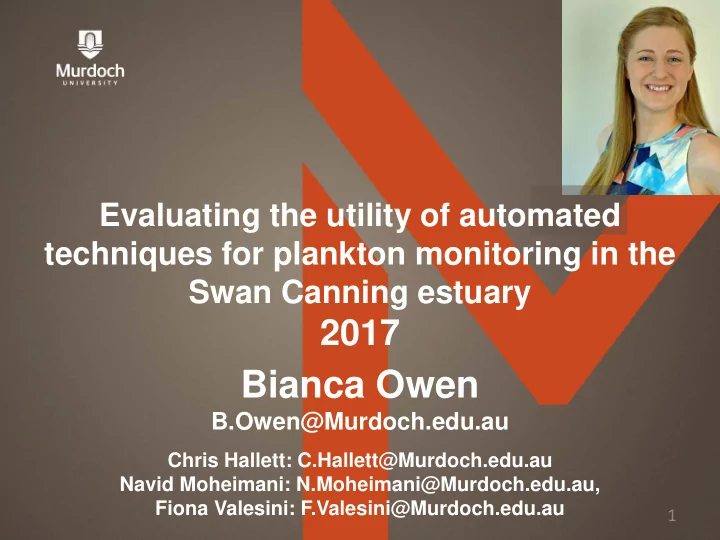

Evaluating the utility of automated techniques for plankton monitoring in the Swan Canning estuary 2017 Bianca Owen B.Owen@Murdoch.edu.au Chris Hallett: C.Hallett@Murdoch.edu.au Navid Moheimani: N.Moheimani@Murdoch.edu.au, Fiona Valesini: F.Valesini@Murdoch.edu.au 1
Background The Western Australian, Department of Parks and Wildlife currently conduct weekly water quality monitoring of the Swan Canning estuary. There are limitations to the current monitoring program, including long turn-around time due to labour-intensive microscopy techniques and various details which are lacking. Automated techniques are increasingly used for the monitoring of plankton communities worldwide, to improve understanding of their dynamics and facilitate timely management responses to issues such as algal blooms. The FlowCAM is one example of an automated image particle analysis system designed to analyse and enumerate microscopic aquatic organisms. 2
Methodology This research project will investigate the value of semi-automated systems, including the FlowCAM, for identification, enumeration and monitoring of phytoplankton and zooplankton in the Swan Canning estuary . The work will compare the FlowCAM and other available technologies against the existing microscopy-based monitoring of the system carried out by the Department of Parks and Wildlife. The FlowCAM (and/or other technologies) will then be utilised to investigate further aspects of plankton ecology within the estuarine system, filling gaps in the scientific understanding of this system and similar systems worldwide. 3 Example FlowCAM output.
Recommend
More recommend